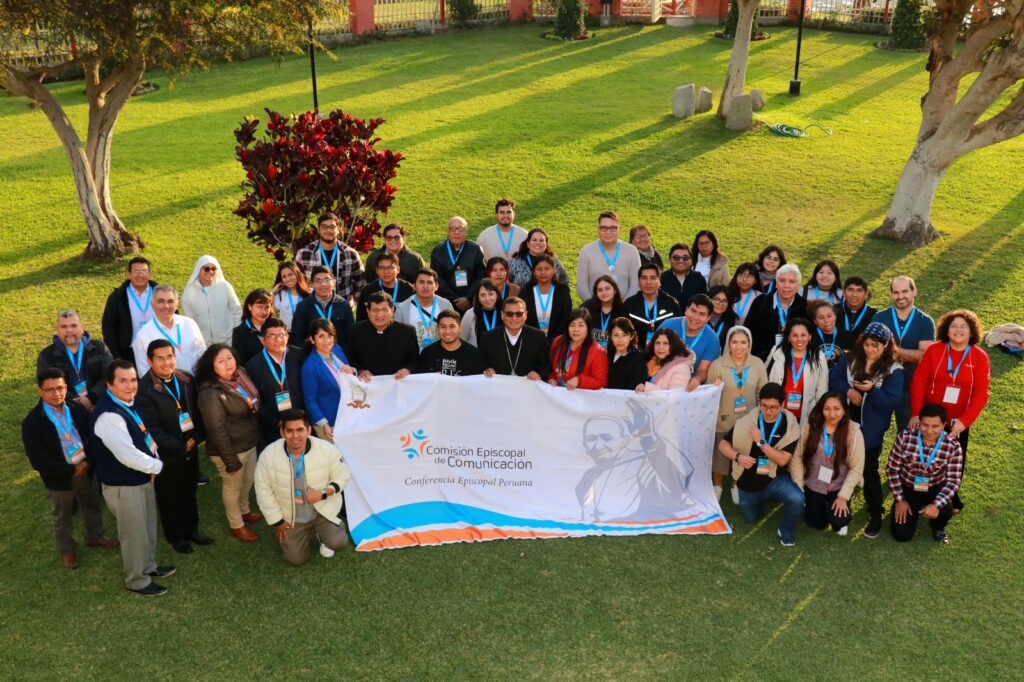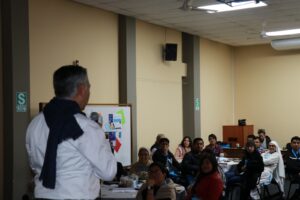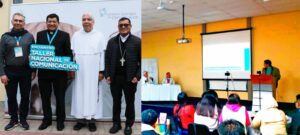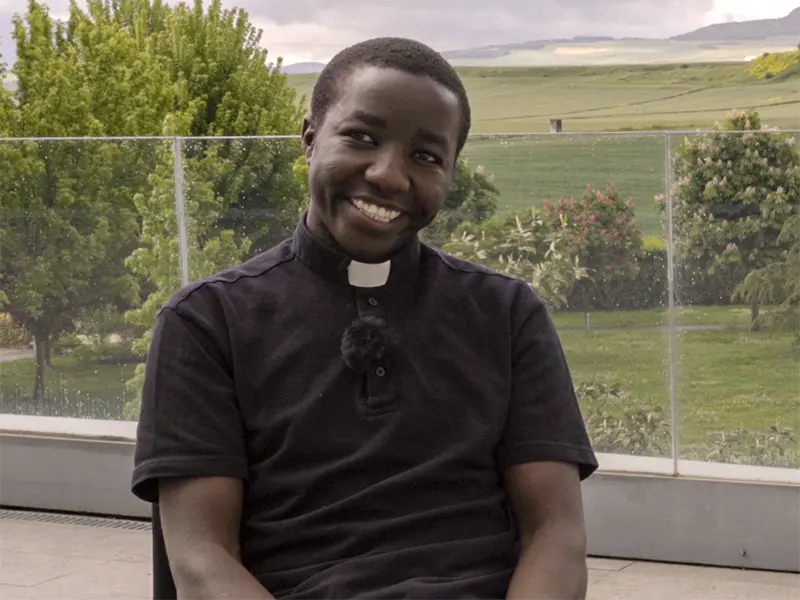Santa Rosa Radio y Televisión Amplia Audience
Time to missionize digital networks

We all live in a network. Interconnected. In the digital ecosystem, journalists and communicators are willing to be heard. How to achieve this? This is the new challenge that calls on YouTubers, Tictakers, Instagrammers. In short, all those who call themselves “influencers”.
Summoned to give time to “listen”, journalists and communicators intertwined their experiences at the national communications workshop meeting, organized by the episcopal commission for the media of the Peruvian Episcopal Conference. All in search of those who still live in the digital peripheries, in lands without a mission.
Why should we give time to “listen”?
After the synod table on synodality, held in Rome in October 2023, it was resolved that from the dicastery of communications it is necessary to accompany the process of “listening”, to make possible a Church on the move. Since the synod, three actions have been carried out in parallel: dedicating time to listening, being a Samaritan to welcome the wounded, and acting with creativity and courage.
How can we reach out to those who inhabit social networks? Can we also go out to meet them in the digital sphere? Without a doubt, the presence of “influencers” at the last synod consolidated the concerns gathered from the digital ecosystem. There were 244 influencers, who made it possible to make known 150 thousand proposals from those interested in being heard. With this, they added 20 million more participants to the synod.
This is how “The Church: listens to you” carried out the synod in the digital biosphere. A land on a mission, in need of a digital presence. In the face of these cultural changes, the communications director of the Latin American Episcopal Council CELAM, Oscar Elizalde, emphasized that this was not a parallel synod, or an improvised project, but rather a missionary experience to go out to meet the other, “to make people feel the need to incorporate it into digital culture.”

“Samaritanizing” digital communications
Despite all the difficulties experienced in Latin America; the situations of poverty and inequality, in addition to the various confluctuating political realities, there is also a clamor, and a need to listen to the “digital biome” that is growing and that the “influencers” put on a plate. In the era of digital transformations of communication, it is necessary to reach a consensus on these divergences, so as not to increase these gaps, as suggested in chapter 17 of the summary report presented after the synod.
This is where the need to “samaritanize” those who are still wounded or feel excluded arises. The aim is to introduce a new perspective from communications. Missionizing these networks according to each reality in order not to “digitalize the pastoral” but rather to establish a “digital pastoral” was one of the ideas that was presented during Elizalde’s presentation, in his presentation “From influencers to digital missionaries,” in summary, he explained how the Church takes on this challenge in the face of cultural changes.
Experiences for communication from Peru
For more than 60 years, Santa Rosa Radio and Television (SRRTV) has been the first Catholic radio station in Peru, as presented by the general director of this radio house, Fray Carlos Sánchez Ortiz, OP during the panel “Communication in Peru: Experiences.”

The radio is broadcast from the Santo Domingo convent, therefore, it constitutes a contribution from the apostolate of the friars of the enclosure. The Dominican priest commented that he received it after the pandemic, and immediately everyone started working on it. That is why the pastoral work is also focused on digital communication through streaming and the live YouTube channel, in addition to the simultaneous website www.santarosaradio.com.pe and its frequencies both in AM (1500 AM) and FM (105.1 FM).
Since February 2023, we are also implementing work for six cable channels that redistribute our programming locally on television. “However, what we are looking for is to expand audiences using social networks, to also meet the communication needs of the digital sphere,” said the Dominican priest.
On the other hand, from the radio press area, journalist Esther Núñez Balbín, head of press for SRRTV, is carrying out a “press laboratory” to promote from the station, a different, ethical, responsible and participatory journalism as was shown during the event.
Related

Reflection by Bishop Enrique Díaz: Alleluia, alleluia
Enrique Díaz
20 April, 2025
5 min

Christ is Risen! Alleluia! Commentary by Fr. Jorge Miró
Jorge Miró
20 April, 2025
3 min

Easter: Mystery of Freedom
Carlos J. Gallardo
20 April, 2025
5 min

“Being Catholic in Tanzania is a source of pride”
Fundación CARF
16 April, 2025
6 min
 (EN)
(EN)
 (ES)
(ES)
 (IT)
(IT)

